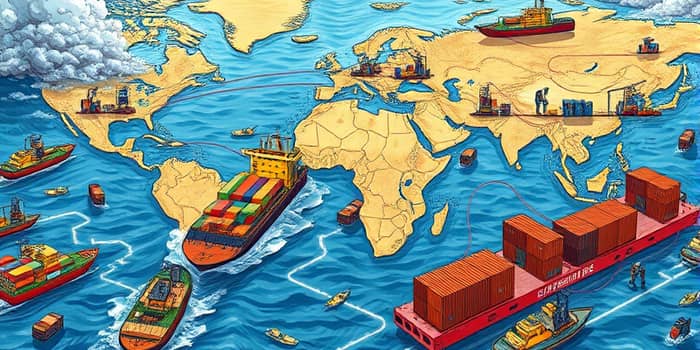
In today’s interconnected economy, disruptions ripple faster than ever, reshaping industries and challenging traditional strategies. Understanding the anatomy of modern shocks is crucial for leaders seeking stability and growth.
From natural disasters to cyberattacks, supply chain interruptions have evolved in scale and complexity. Organizations that fail to adapt risk lost revenue, eroded customer trust, and diminished competitive edge.
At its core, a supply chain disruption is any event that halts or delays the flow of materials, information, or products. However, in 2025, disruptions are no longer isolated incidents.
They often involve multi-causal and simultaneous events that spread across continents in hours. What began as a localized factory shutdown can trigger port congestion, inventory shortages, and surging freight costs thousands of miles away.
Analysts now speak of complex interdependencies across sectors, where technology, logistics, finance, and labor markets intersect in unpredictable ways. This complexity demands a holistic perspective rather than siloed risk management.
In 2025, several primary drivers stand out as recurring sources of instability. Their effects are magnified by globalization, climate change, and shifting geopolitical alliances.
For instance, hurricanes and wildfires can obliterate critical infrastructure, while trade policy swings force businesses to adjust sourcing strategies on the fly. Fierce competition for skilled logistics professionals further constrains recovery efforts.
Measuring the toll of supply chain shocks reveals sobering statistics. Without disruptions from late 2020 to 2021, world trade would have been 2.7% higher and global industrial output 1.4% higher. The U.S. alone saw trade volumes 4.3% below potential and industrial production dipping by 2%.
At the corporate level, costs typically rise by 3–5%, while sales can decline by 7%. Nearly a third of firms delay or cancel new product launches, and one in five resorts to price increases to cushion margin erosion.
Producer price indices bear the brunt, with inflationary pressures transmitting to consumers only partially and with a lag, prolonging economic strain.
No major industry is immune. Retailers face seasonal stockouts just as consumers grow impatient. Automotive manufacturers grapple with semiconductor shortages, stalling production lines.
Logistics firms struggle with port congestion and labor shortages, while the semiconductor sector remains vulnerable to geopolitical tensions and raw material scarcity. In industrial goods, 97% of executives report negative effects, and the automotive sector registers a full 100% impact rate.
Regions that rely heavily on imports, especially those with limited domestic infrastructure, are disproportionately affected. This uneven impact has spurred debates on shifting from globalization toward more localized or regional supply networks.
Forward-thinking organizations embrace technology, sustainability, and structural change to mitigate future shocks.
Adopting advanced risk analytics and visibility tools allows companies to detect vulnerabilities before they cascade. Investments in AI-driven forecasting, real-time inventory tracking, and blockchain-based transparency are rising sharply.
Meanwhile, corporations aim to balance efficiency with resilience by diversifying suppliers, adding buffer stock, and exploring nearshoring options.
Historical disruptions offer valuable lessons for today’s decision-makers.
These cases highlight the importance of contingency planning, cross-functional crisis teams, and the agility to reroute supply flows as events unfold.
Effective resilience strategies combine immediate actions with long-term structural changes. In the short term, businesses must implement rapid risk mitigation—establishing alternative sourcing channels, activating buffer stocks, and deploying emergency logistics partners.
Long-term resilience depends on embedding flexibility into core operations. Companies are expanding their digital infrastructure to support diversified supplier networks and investing in employee training to reduce skill-based vulnerabilities.
Governments also play a vital role. Task forces like the U.S. Supply Chain Disruptions Task Force provide continuous risk monitoring and adaptation, coordinating industry and public stakeholders to safeguard critical sectors.
In this volatile environment, leaders must transition from viewing disruptions as rare crises to acknowledging them as regular operational challenges. Building infrastructure for continuous disruptions ensures organizations remain agile and competitive, no matter what shocks lie ahead.
As global volatility intensifies, the most resilient enterprises will be those that proactively anticipate risks, harness technology, and foster collaborative ecosystems. By learning from past shocks and embracing strategic innovation, we can transform supply chain fragility into a source of enduring strength.
References













